Geumsan World Insam Festival (금산세계인삼축제)
0m 44787 2023-10-18
30, Insamgwangjang-ro, Geumsan-gun, Chungcheongnam-do
+82-41-750-2306
Geumsan World Insam Festival is held annually since 1981 in Geumsan-gun, the largest production region of ginseng in Korea. Growing both in content and in size, the festival was selected as a cultural tourism festival by the Ministry of Culture, Tourism and Sports in 1996 and became established as a national festival. With the rising popularity of the festival, the marvelous effects of Geumsan ginseng have become known throughout the nation, drawing an increasing number of local and foreign tourists every year.
Geumsan Ginseng Museum (금산인삼관)
48.4393232629701m 3167 2021-03-17
30, Insamgwangjang-ro, Geumsan-gun, Chungcheongnam-do
+82-041-750-2621
Geumsan Ginseng Museum was founded to spread the excellence of Korean (Geumsan) ginseng across the nation and the world. Ginseng cultivation implements and models, efficacy, foods, and other products containing ginseng are on display in this museum. Visitors can also watch ginseng-related videos to gain a better understanding of Korean ginseng.
Geumsan Ginseng Market (금산인삼약령시장)
430.58060615893925m 40281 2022-07-28
24, Insamnyakcho-ro, Geumsan-gun, Chungcheongnam-do
+82-41-750-2012
Geumsan is widely known as the largest ginseng market in Korea, holding 80% of the nation’s ginseng trade. Along with its enormous ginseng industry, Geumsan is also rising as the largest herbal medicine market in the country. The Geumsan Ginseng & Herbal Medicine Market is a traditional market with a long-standing history, offering a variety of health products at its international market, Susam Center, Ginseng Medicinal Market and shopping center.
Products here are 20-50% cheaper than elsewhere. Merchants and consumers from all over the country gather at the Geumsan Market on the 2nd, 7th, 12th, 17th, 22nd and 27th of every month starting at 2 am.
Tomb of Seven Hundred Patriotic Martyrs (Geumsan) (금산 칠백의총)
3.4 Km 22073 2022-09-13
50, Uichong-gil, Geumsan-gun, Chungcheongnam-do
+82-41-753-8701
The Tomb of Seven Hundred Patriotic Martyrs is a renowned historical attraction located in Geumsan, Chungcheongnam-do. This holy site is interred with 700 patriots who died in a battle against 15,000 Japanese soldiers in Geumsan during the Imjin War in 1592. Among the deceased is the leader, Jo Heon.
Shrines and monuments were built in memory and respect of the patriotic spirit of those who died in the battle. The site is especially popular among families with children as an attraction as visitors can learn a valuable history lesson as well as enjoy a relaxing walk around the area. In addition, the Cultural Heritage Administration of Korea hosts an annual ceremonial rite every year on September 23 at 15:00, offering more to see for visitors.
Geumsan Boseoksa Temple (보석사 (금산))
5.6 Km 15073 2021-11-29
30, Boseoksa 1-gil, Geumsan-gun, Chungcheongnam-do
+82-41-753-1523
Located on the southeastern slope of Jinaksan Mountain (732 meters), about six kilometers away from Geumsan-eup, Boseoksa Temple was founded by the great Buddhist monk Jogu Daesa in 866 (12th year of King Heongang) during the Silla Kingdom. The temple’s name Boseoksa (boseok meaning jewelry) comes from the statue of Buddha in the temple that was cast from gold found in the mountain facing the temple.
The temple is comprised of Daeungjeon Hall, Euiseongak Shrine and Sansingak Shrine. Close to the temple grounds are 12 stunning waterfalls. Visitors can also see a 1,100 year-old ginkgo tree or take a pleasant stroll along a 300-meter long fir tree road.
Jeokbyeokgang River (적벽강)
9.7 Km 22977 2021-02-01
697, Jeokbyeokgang-ro, Geumsan-gun, Chungcheongnam-do
+82-41-750-2371
The primary source of the Geumgang River is a spring located on Ddeunbong Peak in Subun-ri, Jangsu-gun, Jeollabuk-do, which flows to the north. At Changnam, it changes direction and enters Bangu-ri, Buri-myeon, Geumsan-gun. From here, the river flows through steep mountains. At Sutong-ri, the precipitous cliffs of a mountain named Jeokbyeok tower proudly above, and where the river runs under these steep cliffs it is called the Jeokbyeokgang River.
Jeokbyeok literally means "red walls" in Korean. The Geumgang River under Jeokbyeok is as calm as a peaceful lake with long sandy shores. This riverbank is alive with beautiful flowers in spring, green pine trees in summer, and in fall, the green gives way to an autumnal tint, until lovely snowscapes blanket the area in winter.
Yeongdong Yeongguksa Temple (영국사 (영동))
11.6 Km 24003 2022-12-27
225-35, Yeonggukdong-gil, Yeongdong-gun, Chungcheongbuk-do
+82-43-743-8843
Yeongguksa Temple is nestled at the foot of Cheontaesan Mountain (714.7 meters), at the boundary between Chungcheongbuk-do and Chungcheongnam-do. Visitors must trek through a valley to reach the temple, passing waterfalls and rocks.
The time of Yeongguksa Temple's construction is not clearly known but it is said to have been built around the late Silla period, during the time of King Seonjong. The temple prospered when the State Preceptor Wongak, who completed the Cheontae, one of Buddhist orders from Daegak Guksa Uicheon, came to the temple in the middle of the Goryeo period. It continued to flourish until the early Joseon era and then took a dive due to the rule of anti-Buddhism. Despite the situation at the time, the temple's reputation as one of the noted temples remained. However, the situation worsened in the early twentith century, to the point of near closure. The temple was reconstructed by Jubongjosa Monk in 1934.
As of now, the temple contains various treasures including the Stele for State Preceptor Wongak, Stupa of Yeongguksa Temple, Three-story Stone Pagoda of Yeongguksa Temple, Three-story Stone Pagoda at Mangtapbong Peak of Yeongguksa Temple. In addition, Bell-shaped Stupa and Round-shaped Stupa, regional tangible cultural assets, are situated in the temple site.
Nami Recreational Forest (남이자연휴양림)
11.9 Km 87785 2021-03-05
200, Neutigol-gil, Geumsan-gun, Chungcheongnam-do
+82-41-753-5706
Nami Recreational Forest is the perfect place for leisure activities and family outings. The forest boasts a picture-perfect view of thick, green forests of broadleaf trees, crystal clear water, curiously shaped rocks, and waterfalls. The cliffs and rocks of Daedunsan Mountain are visible from the summit of Seonyabong Peak.
Near the forest are diverse cultural heritage sites such as Baengnyeong Holy Ground and Yukbaekgoji Victory Tower. Nami Recreational Forest provides visitors with a unique combination of cultural sites and natural beauty, making it a popular destination among visitors.
Maninsan Recreational Forest (만인산 자연휴양림)
12.1 Km 1 2023-02-09
106, Sannae-ro, Dong-gu, Daejeon
Maninsan Recreational Forest sits on the border between Daejeon and Geumsan-gun, Chungcheongnam-do, and is located approx. 17 kilometers away from Daejeon Station on National Route 17. It consists of Maninsan, the main peak, as well as Bongsuregol, Keunbaegol, and Jageunbaegol, and, because of its beautiful landscape, it even enshrined the figures of King Taejo and his princes during the Joseon Dynasty. Pure water constantly flows in the valleys and broadleaf trees form a thickly wooded forest. This recreational forest located close to the city has utilized natural ridges and is divided into the family recreation district, youth district, and picnic district to provide a pleasant resting area for citizens. Maninsan Service Area is a convenience facility of the recreational forest built with private capital in 1990 and, at the time of its construction, it utilized the natural valleys as they were without damaging any part of the forest. Decks were installed in the valleys, and the structure itself was built with one semi-underground floor and two ground floors. The main framework was made of reinforced concrete and wood was used as the primary material for construction. Also, a pond was created in front of the rest area to harmonize with the natural landscape. As a result, it is widely praised by experts as the most beautifully constructed rest area in Korea, and it is becoming a place that citizens frequently visit to relax. There are comfortable benches and resting spots situated throughout for visitors to relax while enjoying the views and, in particular, Manillugak is a symbolic recreational facility of Maninsan and a representative pavilion structure. It was built in the architectural style of Segeomjeong Pavilion located on Bugaksan in Seoul while employing reinforced concrete for the main framework. It applies a two-story, wooden tile roof to maintain as much beauty of Korean traditional architecture as possible with the consideration of maintenance.
Daedunsan Recreational Forest (대둔산자연휴양림)
14.1 Km 21170 2020-11-18
6, Daedunsan-ro, Geumsan-gun, Chungcheongnam-do
+82-41-753-4242
Daedunsan Recreational Forest contains deep valleys and magnificent peaks. The new-growth forest on the lower half of the mountain is in perfect harmony with its idyllic surroundings. Nearby tourist attractions include Daedunsan Provincial Park, Taegosa Temple, and a battlefield from the Imjin War (1592-1598).
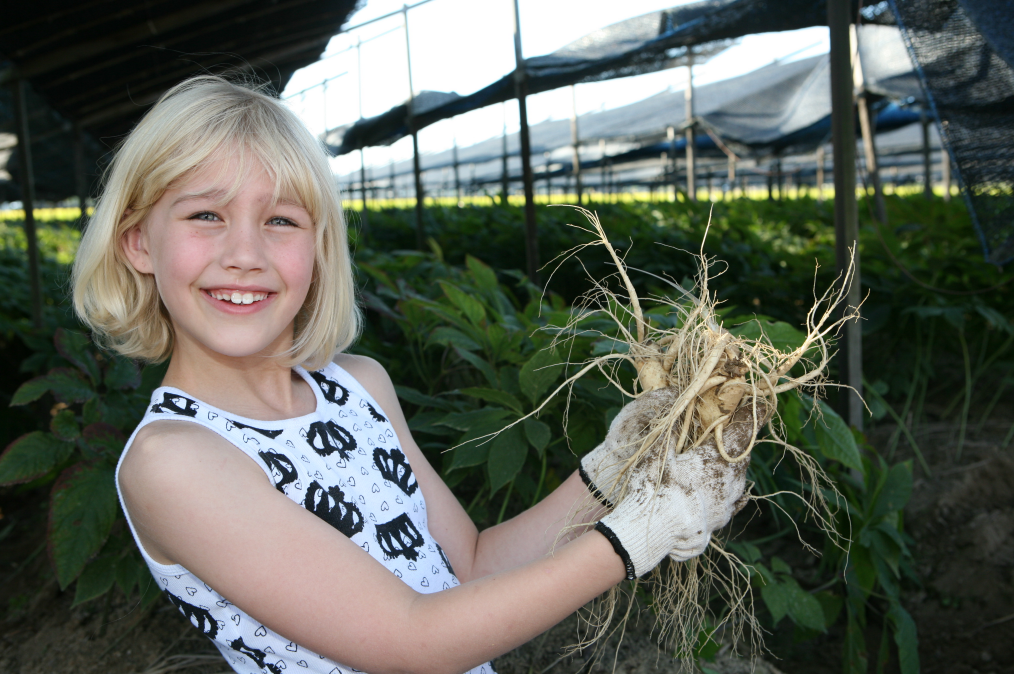
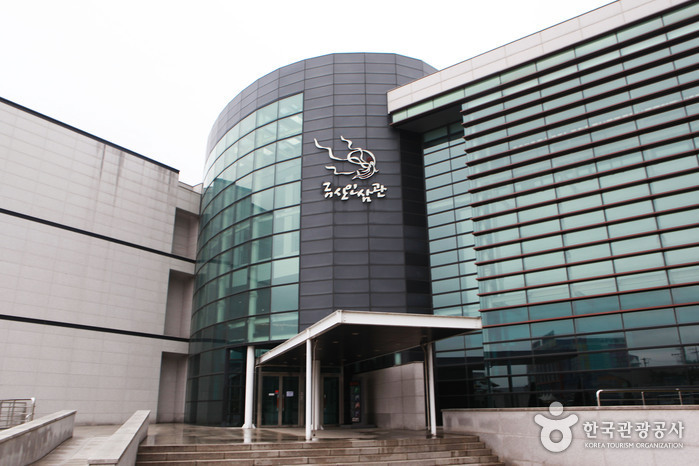
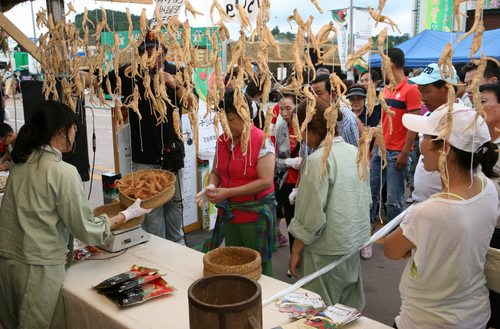
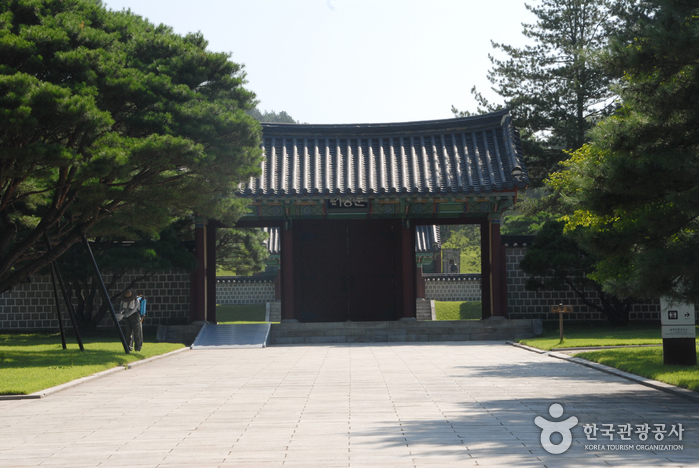
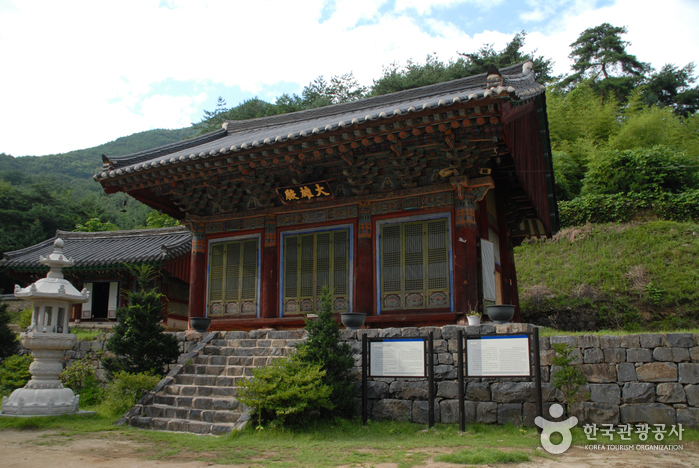
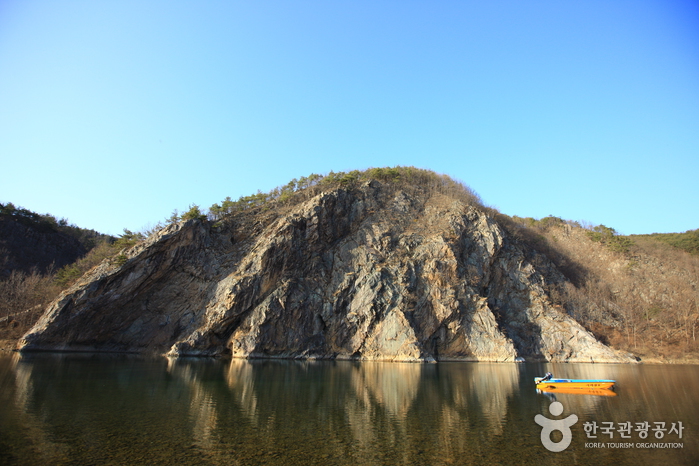
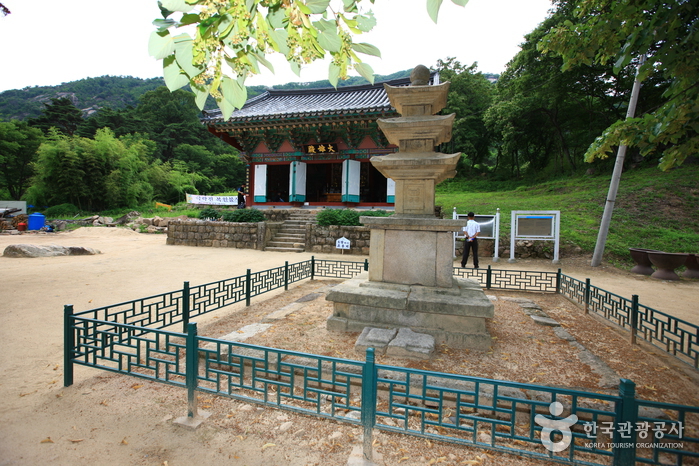
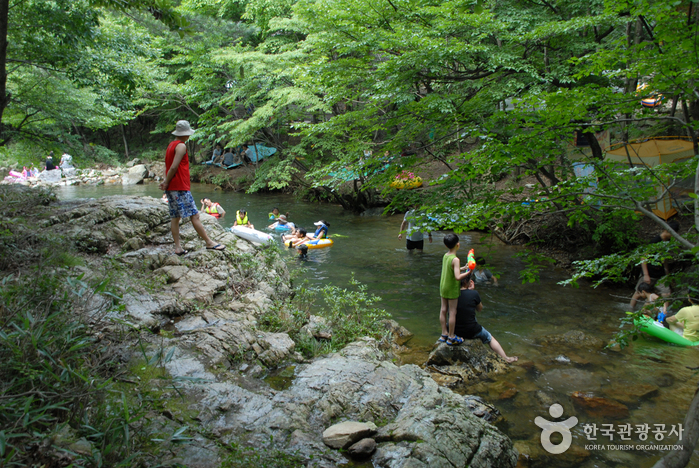

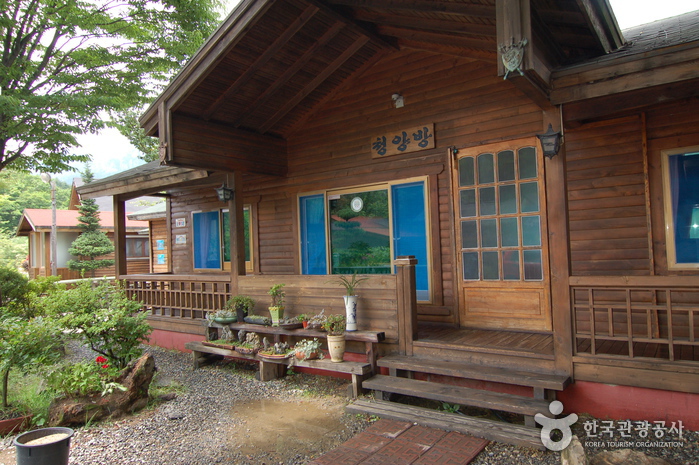
 English
English
 한국어
한국어 日本語
日本語 中文(简体)
中文(简体) Deutsch
Deutsch Français
Français Español
Español Русский
Русский